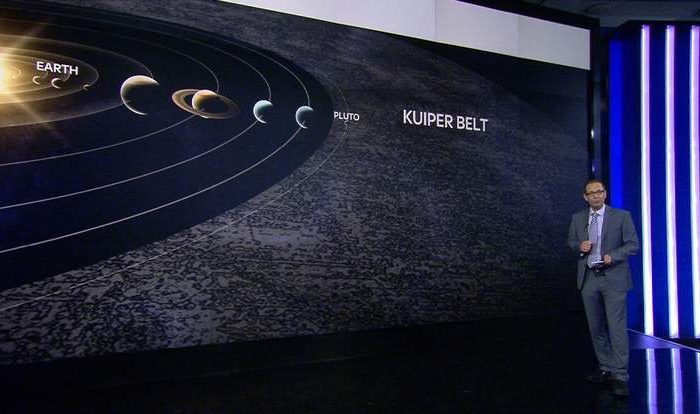


NASA has released new photos which show mountains, possible dunes and multiple layers of haze on the dwarf planet Pluto.
The images were taken by the New Horizons spacecraft as it swept past the distant body in July.
Scientists say they reveal an even more diverse landscape than they had previously imagined.
“If an artist had painted this Pluto before our flyby, I probably would have called it over the top – but that’s what is actually there,” said Alan Stern, New Horizons’ principal scientist from Southwest Research Institute in Boulder, Colorado.
In one picture, dark ancient craters border much younger icy plains. Dark ridges also are visible that some scientists believe might be dunes.
One outer solar system geologist, William McKinnon of Washington University in St Louis, said it would be “completely wild” if the ridges are dunes given Pluto’s thin atmosphere.
“Either Pluto had a thicker atmosphere in the past, or some process we haven’t figured out is at work. It’s a head-scratcher,” he said.
It is thought the jumble of mountains, on the other hand, may be huge blocks of ice floating in a softer, vast deposit of frozen nitrogen.
As well as geologic features, the images show the atmospheric haze surrounding Pluto has multiple layers.
In addition the haze creates a twilight effect that enabled New Horizons to study places on the night side that scientists never expected to see.
It is almost two months since the probe’s close encounter with Pluto on 14 July, nine and a half years after it was launched from Cape Canaveral in Florida.
In that time it covered a total of three billion miles (4.8 billion kilometres). On Friday it was 44 million miles (71 million kilometres) past Pluto.
So much data was collected during the flyby it will take until next Autumn to retrieve it all here on Earth.
New Horizons’ next target, subject to approval by NASA, will be a much smaller object one billion miles (1.6 billion kilometres) beyond Pluto.
It also lies in the so-called Kuiper Belt, a frigid twilight zone on the outskirts of the solar system.
Following a set of manoeuvres, New Horizons should reach PT1 – short for Potential Target 1 – in 2019. –SkyNews.com
Sorry. No data so far.


